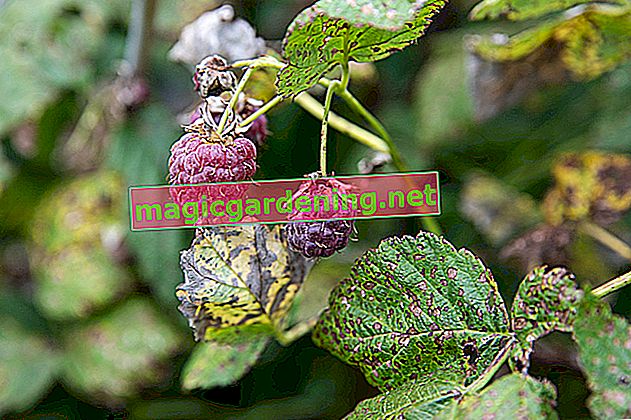
blossoms
If the lilac is not in bloom, there is not always a pathogen behind it. In most cases the location is just too dark or the plant is not getting enough nutrients. A possible waterlogging (caused for example by too frequent watering or too much rain) can be behind it. In these cases a change of location or a supply of fertilizer helps.
also read
- Fungal attack in lilacs - what to do?
- Brown leaves on the lilac - what's the cause?
- Lilac has brown spots on the leaves - causes and their elimination
leaves
In many cases, diseases are noticeable on the leaves, although other parts of the plant such as branches and trunks can also be affected later.
- Leaves turn yellow
If the lilac gets yellow leaves, there are usually location problems behind it: Either the plant is too dark, too wet (waterlogging) or it lacks nutrients. Repot them or provide them with suitable fertilizer.
Leaves are light green
Light green leaves with dark green leaf veins are a clear indication of an iron deficiency. Treat the so-called chlorosis with the administration of an iron fertilizer. You should also check the location, because this phenomenon occurs mainly on soils unsuitable for lilacs. You should also remove any mulching (for example with bark mulch).
Leaves have brown spots
Brown spots on lilac leaves can look very different and accordingly have different causes. Mostly fungi are behind it: Ascochyta syringae (large, brown-rimmed spots), Gloeosporium syringae (very large, brown spots), Heterosporium syringae (gray-brown spots with a velvety surface) and Septoria syringae (yellow-brown spots). Furthermore, the bacterium Pseudomonas syringae initially causes light to dark brown leaf spots and finally shoot rot. Suitable measures in all cases: Remove or cut back infected plant parts, remove fallen leaves and spray lilacs with field horsetail. If the infestation is severe, a copper spray from the garden center will help.
The leaves have a whitish coating
Mildew fungi are quite common in lilacs. Special measures are basically not necessary, but you can prevent an infestation by spraying field horsetail or garlic in spring. Diseased parts of the plant are cut back and disposed of.
Shoots, branches and trunk
Wilting phenomena in lilacs can also have very different causes. For example, the lilac disease caused by the bacterium Pseudomonas syringae and the wilt disease caused by Verticillium fungi are common. In both cases, you should immediately cut diseased parts of the plant deep into the healthy wood and dispose of the clippings in the household waste or burn them.
root
You also have to be careful with honey mushrooms, which are very fond of old lilacs and cause root rot. In the event of infection, the only thing that will help is to clear the tree and eat the mushrooms.
Tips
Many of the symptoms described do not necessarily have to be caused by pathogens. Some pests also like to feed on lilacs.








